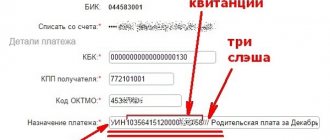In essence, OKPDTR is a directory with codes that determines whether a worker belongs to any group. It was introduced in 1994 instead of the All-Union Classifier of Specialties (UCS). The need to replace the old document is justified by changes in the economy and production environment. This served as a means of achieving consistency between Russian accounting and statistics standards and international ones.
| For reference | |
| Abbreviation | OKPDTR |
| Designation | OK 016-94 |
| Introduction | 01/01/1996 (Resolution of the State Standard of the Russian Federation dated 12/26/1994) |
| Change | 01.08.2012, No. 7 (Order of Rosstandart dated 19.06.2012 N 112-st) |
Contents and objectives of OKPDTR
The code contains information about:
- whether the employee is a worker or an employee;
- the nature of the work he performs;
- applied tariffs;
- skill level;
- payment method;
- degree of severity and harmfulness of work;
- level of workplace automation;
- job categories;
- the position of the staff unit in the hierarchy.
Classifier tasks
- Collection and synthesis of information about all professions and positions available on the territory of the Russian Federation into a single structure.
- Creation of a statistical report on the state of the labor market.
- Assessing the state of the workforce by qualification level.
- Analysis of working conditions and wages.
- Accounting for the number of employees employed in different fields of activity.
- Integration into the global statistical system.
- Identification of the average educational level to create conditions for retraining and improving the professional level of personnel.
- Ensuring the correctness of entering the names of positions and professions into documents when hiring personnel.
How the data compares
Those who have understood the codes of the classifier of professions and positions have already understood whether there is a correspondence between OKPDTR and OKZ - it exists, and it is obvious: the code from one is included in the other. But a group of classes is generalized information, and it is not easy to find the necessary similar information in another reference book, although it is possible. Let's show this with a specific example.
Let's say we have code 2433 in OKZ, which OKPDTR, now we'll see. According to the occupation classifier, this is a set of characters for specialists in the sales of products, except for information and communication technologies. Let's look at what fits this category in OKPDTR, and what codes these professions have:
- Head of Department (Marketing and Product Sales) - 22047;
- manager (in departments (services) for marketing and sales of products) - 24068;
- Head of Department (Marketing and Product Sales) - 24698.
Based on the position available in your organization, select the appropriate code.
This was an example of how to find OKPDTR using OKZ, now let's try to do the opposite. Select the type of occupation based on the name of the profession. Let's take the profession of a teacher (in OKPDTR - 27244) and find a suitable code for it in OKZ. A teacher in the occupation classifier is a person belonging to the group “Teaching workers in secondary school”, and the code is 2330.
Please note that there is some correlation between OKPDTR and OKZ: for one occupation code there are always several positions or professions. But the opposite never happens.
IMPORTANT!
Some sites offer a correspondence table between OKZ and OKPDTR, but it does not officially exist. In 1994, when the classification of professions was approved, it immediately offered groups of occupations. But in 2015, a new classifier with the names of occupations came into force, and amendments to the directory with the names of positions were never made. Therefore, if you need to find the appropriate codes for specific professions, we recommend collecting data manually from the current editions of the directories.
Where and by whom is it used?
It is used in a production environment, wherever workers and employees are hired. It is assigned immediately upon hiring. The code is reflected in the documents of the accounting department and human resources department. It is most often used in the following cases:
- When drawing up documents: employment contract, personal T-2 card, dismissal order, assumption of position. OKPDTR is entered into them.
- To make decisions on the payment of compensation and the application of benefits.
- Determining the name of the future position based on its characteristics.
- Entering the position into the staffing table.
- Providing reports on accruals to the pension fund.
- Assignment of a pension for length of service.
What is a job qualification directory
The Unified Classification Directory of Positions of Specialists and Employees (USC) is a list of qualification characteristics (job responsibilities and requirements for the level of knowledge and qualifications) of managers, specialists and employees, depending on the field of activity. Additional sections of the CEN are introduced by relevant orders of the Ministry of Labor. To date, the latest is Order No. 225n dated May 10, 2016, approving “the qualification characteristics of employees of military units and organizations of the Armed Forces of the Russian Federation.” The frequency of updates to the directory is not regulated by law. Thus, the document amended by the above Order is currently the qualification directory for the positions of workers and employees 2022.
What sections and blocks does it consist of?
The classifier is divided into two main sections:
- for workers;
- by employees.
Workers include employees directly involved in production. They do the work that results in a real product. The place of work can be a workshop, a workshop, a house under construction, etc. It is usually equipped with a large number of technical means and equipment designed for working with materials. The main resource in a worker’s work is physical strength and good health. Payment for many professions is piecework. Working hours depend on the nature of the activity. Can be installed at any time of the day. For example, road construction is carried out at night. A higher education is not required for such work.
Employees are administrative personnel. These include accountants, managers, secretaries, any other office specialists and management staff. They work with information. The main resources of an employee are intelligence, knowledge, and specialized education. The workplace is equipped with a telephone, a computer, and a fax machine on the table. The work schedule is clearly defined, established once, upon hiring, and fixed in the employment contract. Opening hours are daytime. Employees are hired for positions after graduating from university.
What is it for?
The EKS, which is based on the All-Russian Classification of Occupations of White-collar Jobs, was compiled with the aim of developing universal standards for the organization of labor. In fact, this document helps the employer competently build the structure of the organization. The qualification characteristics optimize the following functions:
- selection and placement of personnel;
- professional training/retraining of personnel;
- rational division of labor;
- determination of job responsibilities and areas of responsibility of personnel.
A personnel employee relies on the 2022 Classification of Positions and Professions when working with documents such as staffing schedules, job descriptions, regulations on departments, etc. OKPDTR classifier (2020) with a search by name is posted on the website of the Ministry of Labor and Social Protection.
Three blocks in classifier positions
- Identifying. It is a composite code that includes five consecutive digits that make up the number and one separately - the check number. The first encrypts information about the profession or position. The next four are simply a serial number in the register. The control number is determined based on a unified methodology for its calculation.
- With the name of the object. Each code corresponds to the name of a position or profession. It must be used exactly in the form in which it is given and cannot be changed at will by the organization using it. The names are arranged alphabetically.
- Informational. It contains codes called facets. They indicate the correspondence of the profession code to the tariff codes according to ETKS and the codes of the old OKZ classifier.
Facet codes reflect the following characteristics and features of professions:
- 01 – types of work and production activities;
- 02 – tariff categories;
- 03 – skill levels;
- 04 – terms of payments for labor;
- 05 – working conditions;
- 06 – equipping with equipment;
- 07 – professions in production.
Directory structure
The information presented in the directory is presented in the form of a table, which has the following columns:
| Columns | Description |
| Direct code according to OKPDTR | Indicated in the format NNNN N, where the first digit indicates that the specialty belongs to production or public service. In the first case, the symbols 1,3 are used, in the second - 2,4. The next four digits are a unique set of characters that identifies a specific specialty. The last value, indicated separated by a space, is a control number, the calculation of which is carried out according to a special method developed by Gosstandart. |
| Name of specialty | For the convenience of users, job titles in the directory are arranged in alphabetical order. |
| Tariff categories | As a rule, blue-collar jobs require certain knowledge and experience from the employee. In the directory, this is reflected by the designation of one or more categories that a citizen must possess. For example, the OKPDTR states that a grinder can have categories from 2 to 6, a tunneler – from 2 to 3, etc. If there is no such requirement, the value in the column is not entered. |
| Issue code according to ETKS | This is the number of the publication that contains information about a specific position. |
| OKZ code | This is the code value in the All-Russian Classifier of Occupations. As a rule, several specialties from the OKPDTR correspond to one value from the OKZ, because it uses a broader division by profession. |
Is it mandatory to use OKPDTR?
The need to use a classifier in relation to a specific staff unit is directly dependent on the conditions stipulated in the employment contract. And the mandatory components of this type of contract are regulated by the provisions of Art. 57 Labor Code of the Russian Federation. In accordance with the article, it must include information about the employee’s labor function:
- a list of specific tasks required to be performed in the position;
- work consistent with the staffing schedule;
- speciality;
- profession;
- qualification.
If the norms of federal legislation provide for preferential conditions, compensation payments, limiting factors for a certain position or profession, their names must be used unchanged, in accordance with OKPDTR or other reference books and provisions of the Government of the Russian Federation containing standards. Mandatory conditions, for example, may be:
- pension;
- the presence of harmful or hard work;
- additional leave;
- inclusion of a tariff category for employees;
- application of tariffs regarding work.
Why do you need a directory?
To begin with, the directory was put into effect by a decree of the State Standard. It is part of the unified coding system adopted in Russia. Its object is the positions and specialties of workers and civil servants, i.e. their positions in the structure of a company or government authority, characterized by a certain set of functions.
The OKPDTR directory is used to solve the following tasks:
- organization of accounting of population employment in dynamics and statics;
- determining the level of qualifications of employees;
- tracking the needs of the economy in certain specialties;
- monitoring the correctness of pension calculations, ensuring proper working conditions at enterprises, etc.
However, firms are required to use employee job titles from OKPDTR only if the provision of additional benefits is associated with this designation. For example, shortened working hours, the right to annual medical examinations, etc. In other cases, the names of specialties are developed by the employer himself without restrictions.
A case from judicial practice
Mr. N. worked under an employment contract as a mechanic. Changes took place in the company, and by decision of management, department N. was renamed and contracts with employees were renegotiated. N. was familiarized with the new job description against signature, but did not agree with the innovations relating to his position. He was not happy with the fact that while working as a mechanic, in addition to his previous duties, he was also required to perform the functions of a cleaner and security guard. The requirements were documented in the job description. Expressed dissatisfaction verbally. The authorities did not accept his point of view. N. filed a lawsuit because he believed that the management’s requirements did not correspond to the characteristics established in OKPDTR for the position of a mechanic.
The court did not satisfy the claim, explaining that Art. 8 of the Labor Code of the Russian Federation allows organizations to independently develop internal regulatory documents.
The job description refers to internal regulations. There are Gosstandart rules that you should rely on when creating a document. But the legislation does not establish strict rules for its development. Therefore, the employer has the right to introduce standards at his own discretion, taking into account the specifics of the company’s activities and the requirements for the position.
OKPDTR standards in some cases are advisory in nature. If, based on the nature of the activity, there is no need for them, no penalties are provided for non-use. The moments at which the provisions of the classifier must be taken into account are established by law at the federal level.
Encoding examples
The profession in OKPDTR “accountant” is represented by several codes, including:
- 20336 – accountant;
- 20339 – accountant-auditor;
- 20342 – accountant-expert, etc.
This is not a working profession, therefore the reference book does not indicate the requirements for the tariff category. It is indicated that these specialties are mentioned in the second edition of the ETKS.
Separately in the directory there is a position “chief accountant”, which is assigned code 20656. Information about it is presented in the first edition of ETKS.
In turn, the profession in OKPDTR “economist” is designated by code 27728. The requirements for the tariff category are not specified; it is stated that information about the specialty is contained in the second edition of the ETKS. Additionally, the positions of “chief economist”, “labor economist” and others, which have their own code designations, are highlighted.








